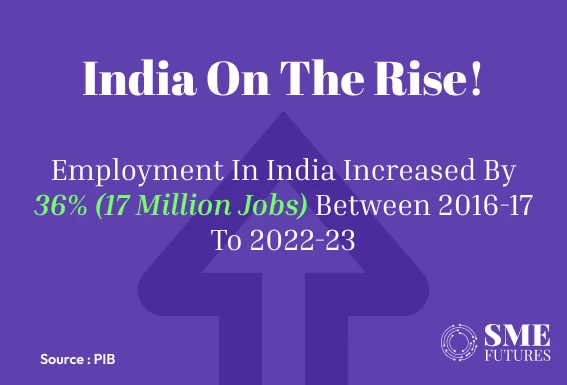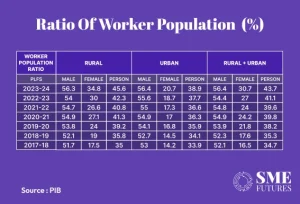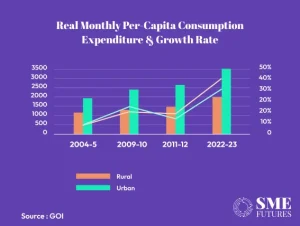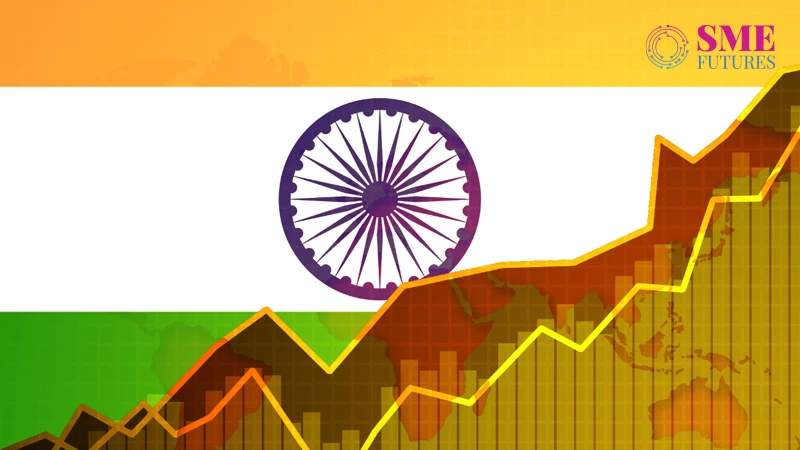India’s employment landscape is undergoing a transformation, one that tells a story far different from the long-perpetuated myth of “jobless growth.” The country has witnessed a near 36 per cent rise in employment, adding approximately 17 million jobs between 2016-17 and 2022-23. While many have questioned the country’s ability to generate jobs alongside its robust GDP growth, the data tells a promising story of a dynamic economy creating opportunities across sectors.
Let’s dive deeper into the numbers and see why India’s employment growth is anything but stagnant.
Breaking away from the myth
For years, there’s been talk of “jobless growth”—a phenomenon where a country’s GDP rises, but employment fails to follow suit. However, a recent report by the Observer Research Foundation, titled “Busting the Myth of Jobless Growth: Insights from Data, Theory, and Logic”, challenges this narrative. It reveals that India has indeed created millions of jobs, and the country’s economic model is not detached from employment generation.

The data speaks
Between 2016-17 and 2022-23, India saw its employment increase by 36 per cent, or 17 million jobs. During this period, GDP also grew at an impressive average rate of over 6.5 per cent. Data from the Reserve Bank of India’s KLEMS database further supports this trend. This database, which compiles data from multiple surveys, such as the Employment and Unemployment Survey (EUS) and the Periodic Labour Force Survey (PLFS), indicates a consistent rise in employment since the 1980s.

One of the most telling indicators is the Worker Population Ratio (WPR). According to the PLFS data, the WPR increased by 9 percentage points (or nearly 26 per cent) from 2017 to 2023. This metric, which reflects the percentage of people employed within the working-age population, shows that India has made significant progress in employment generation.

Employment and economic growth: A symbiotic relationship
India’s growth model is driven by consumption, which is inherently linked to employment. As consumption rises, employment follows suit. After all, people need money to spend, which they earn through jobs. The fact that consumption has continued to increase in India strongly suggests that job creation is occurring.

Further, employment elasticity—a measure of the percentage change in employment for every percentage change in GDP—paints a similar picture. For the period 2017-23, employment elasticity was 1.11, meaning that for every 1 per cent increase in value added to the economy, jobs grew by 1.11 per cent. This shows a healthy relationship between economic growth and job creation, dispelling fears that India’s services-dominated economy is not generating enough jobs.
Sectoral shifts in employment
Agriculture remains a major source of employment in India, employing more than 45 per cent of the workforce. However, the economy is steadily shifting towards manufacturing and services. This is evident in the manufacturing sector, which saw growth of 11.8 per cent between FY18 and FY22 for factories employing over 100 workers. Larger industrial units are increasingly contributing to job creation, outpacing smaller enterprises.
The gig economy is another booming area, with the workforce in this sector expected to grow to 2.35 crore by 2029-30. Additionally, while the world braces for job losses due to automation, India’s manufacturing sector appears somewhat insulated, offering continued opportunities for growth.
Wage growth and labour market improvements
Wage growth, particularly in rural areas, has been a key highlight. From FY15 to FY22, wages in rural areas grew at a compound annual growth rate (CAGR) of 6.9 per cent, outpacing urban wage growth at 6.1 per cent. This rise is due in part to the rising demand for labour in rural industries like construction and manufacturing, bolstered by programs such as the Mahatma Gandhi National Rural Employment Guarantee Act (MGNREGA).
Meanwhile, India’s labour market indicators have shown marked improvement. The unemployment rate declined to 3.2 per cent in 2022-23, and the youth unemployment rate (for those aged 15-29) dropped significantly from 17.8 per cent in 2017-18 to just 10 per cent in 2022-23. Women’s participation in the workforce has also risen steadily, thanks to supportive government policies.
Formalisation of jobs: The EPFO boost
Formal job creation has been a bright spot in recent years, evidenced by the growth in payroll additions to the Employees’ Provident Fund Organisation (EPFO). The yearly net payroll additions more than doubled from 61.1 lakh in FY19 to 131.5 lakh in FY24. This rise indicates increased formalisation of employment, spurred by both new job creation and government initiatives encouraging formal sector jobs.
A rosy economic outlook
India’s economy continues to grow, with real GDP expected to rise by 8.2 per cent in FY 2023-24, up from 7 per cent in the previous fiscal year. The manufacturing sector has been a major driver, growing by 9.9 per cent this year, while mining and quarrying saw growth of 7.1 per cent.
These figures not only reflect the economy’s resilience but also the opportunities it presents for job creation. With real GDP set to reach ₹173.82 lakh crore in 2023-24, the future of India’s workforce looks promising.
India’s employment growth is anything but stagnant. With millions of jobs created and consumption driving the economy forward, the narrative of “jobless growth” no longer holds water. From sectoral shifts in employment to wage growth and a booming gig economy, India’s workforce is adapting and thriving in a rapidly evolving economy.
As India marches ahead, its employment story is one of progress, proving that growth and jobs can indeed go hand in hand.











